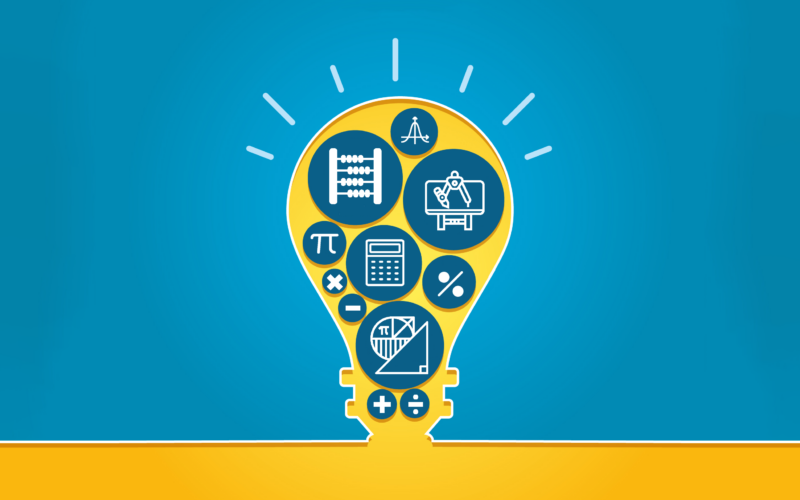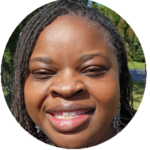Lessons Learned Teaching Math to Adults

by Dr. Krissy Anderson-Bassett
This is my second year teaching math to adults. Education is one of my passions and I believe that no matter what age we are, we never stop learning! It is my conviction that the education of adults is just as important as the education of our children. We all learn differently and discovering what works for each learner is half the battle. I find that applying different techniques and using creativity is fun!
I thought that teaching adults was going to be harder than it has been. There are several videos and online practice pages that have assisted me in making it easier both to teach and for students to retain what they have learned. In the process, there have been “aha” moments that showed me that learners know more than just enough to pass the GED® math reasoning test. The students have also learned skills to be successful in their life goals.
The first thing I learned about teaching math to adults is that we must be honest! One of the initial things that I do when beginning a new class is share my story. I tell about my journey of math while in school. It was not my favorite subject. As a matter of fact, I spent many nights crying because I did not understand math. No matter how hard my mom tried, I would be frustrated and so would she.
Second, I share that before I teach each lesson, I must relearn the subject matter to be sure I know that I know what I am teaching. I go through all the videos and I practice so I can efficiently help them and answer their questions. I also vet the videos to be sure they are not too confusing. If I am confused, I am sure the students will have some difficulty as well.
Thirdly, when I am teaching and once I am done with what I know, I ask the students if they know a different way to work a problem. The students may have learned a method I do not know and that can give them a “light bulb” moment. The students can then choose the method that works for them. Sometimes, I purposely miss steps to see if the learners catch my error.
For my class, our favorite math assistant is Mr. J. Probably 95% of the time we watch his videos first. We also watch Mr. Buffington and Khan Academy. When it comes to videos, we always start with the basics. By basics, I mean we look for the first age group that would learn a skill, then build on that. I thought that the adult learners would feel it was beneath them to watch a 3rd or 4th grade video so the first time I introduce a video, I may say it is a cartoon or song on a child’s level. My class has said unanimously—the simpler, the better.
When we do practice work for math, we begin the same way. We start on the grade level it is first taught and move up levels from there. Most often, we use math-drills.com for worksheets to practice. We have also used dadworksheets.com and math-salamanders.com. We typically watch a video, practice some with the students walking through the resolution of the problem, and then the students have time to work a few problems on their own. Once the students are done with their independent practice, I ask for answers to the problems. When a learner provides an answer, I ask the class if they agree or disagree and we go with the majority answer. If the answer is correct, we celebrate the person who provided the original answer. If we have those who did not get it correct, we allow other students to walk us through to the resolution. We do this as a class. Videos, practice work, tools, and tips are uploaded to Google Classroom after class along with a homework assignment for reinforcement. We begin each subsequent class reviewing that homework.
It is important to note that we do not support negative talk when it comes to math. When learners say what they “can’t” do, they are encouraged to say they can. We change that to, “It may be a challenge, but I can do this math.” I have even had the learners from my class watch “The Little Engine that Could,” as a homework assignment. In my opinion, when we say what we can’t do, we shut our minds off to the possibilities.
There is not one sure method that works for everyone. Allowing learners to share methods that have helped them succeed has proven to be a positive step. Working through where a student gets stuck is important, no matter how many times it has been reviewed before. Sometimes we are the only one who can provide that extra help. Adult learners have full lives! We can’t just show up, teach, and run. They are our students and I feel their education is just as vital as our children.

I almost forgot! We use the real world in their learning about math. Most of the adult learners work, cook, watch sports and deal with money. Using their everyday life helps to make math relatable. They already use it, though they may not recognize it, every day. These are some of the tools and tips that have provided a positive teaching and student retention experience for me. The success of these students makes it all worthwhile.
 Dr. Krissy Anderson-Bassett is a GED®/ELA Instructor with Richmond Public Schools. She has been teaching adult education for two years and holds a bachelor’s of science degree from Longwood College (University) and both a master’s degree of divinity and a doctorate of ministry from The Samuel Dewitt Proctor School of Theology at Virginia Union University.
Dr. Krissy Anderson-Bassett is a GED®/ELA Instructor with Richmond Public Schools. She has been teaching adult education for two years and holds a bachelor’s of science degree from Longwood College (University) and both a master’s degree of divinity and a doctorate of ministry from The Samuel Dewitt Proctor School of Theology at Virginia Union University.